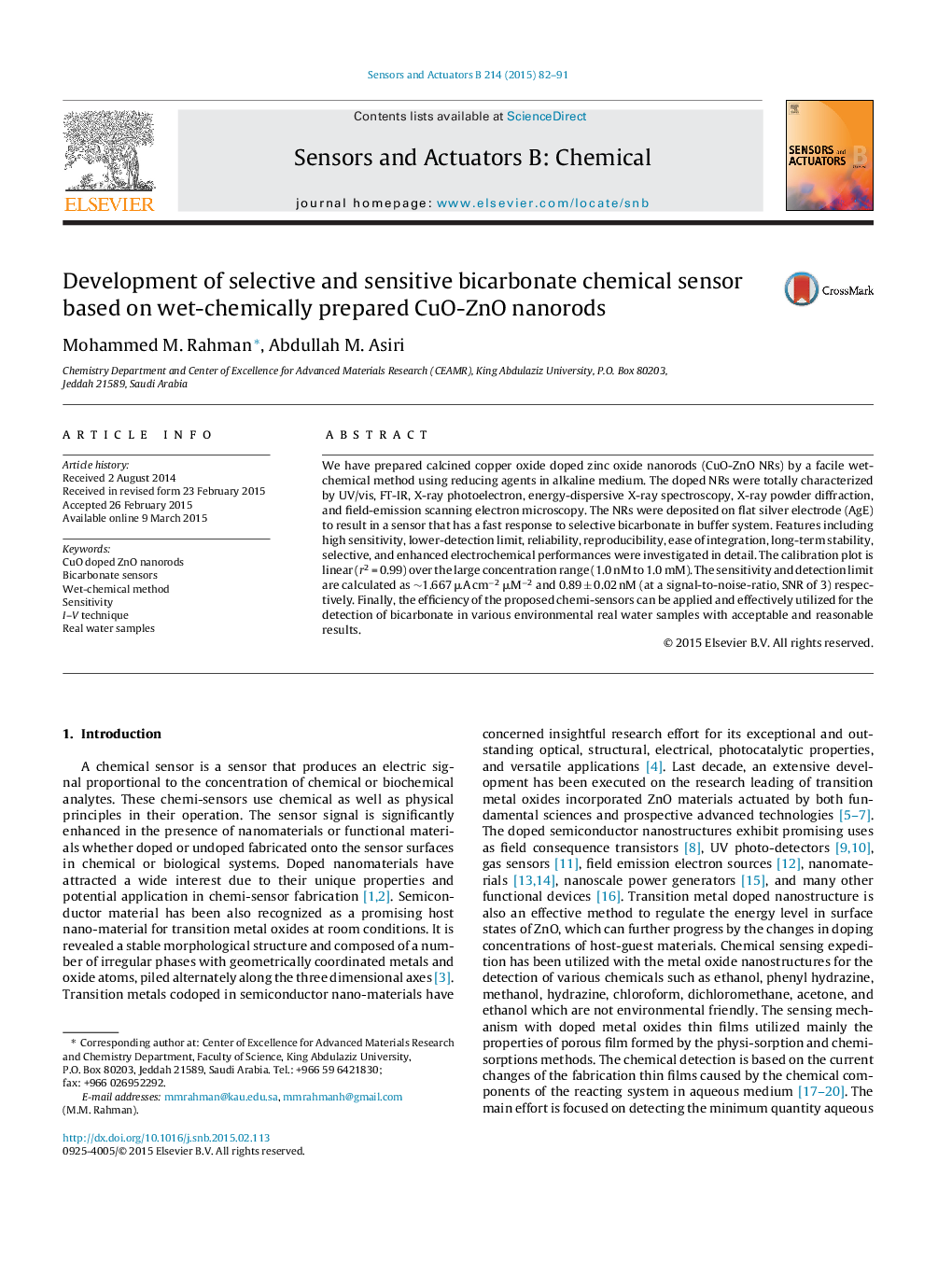| Article ID | Journal | Published Year | Pages | File Type |
|---|---|---|---|---|
| 741689 | Sensors and Actuators B: Chemical | 2015 | 10 Pages |
•Well-crystalline CuO-ZnO NRs were prepared by facile wet-chemical process.•Selective detection of biocarbonate ions using NRs by reliable I–V technique.•It displays the highest sensitivity towards bicarbonate ions ever published in the literature.
We have prepared calcined copper oxide doped zinc oxide nanorods (CuO-ZnO NRs) by a facile wet-chemical method using reducing agents in alkaline medium. The doped NRs were totally characterized by UV/vis, FT-IR, X-ray photoelectron, energy-dispersive X-ray spectroscopy, X-ray powder diffraction, and field-emission scanning electron microscopy. The NRs were deposited on flat silver electrode (AgE) to result in a sensor that has a fast response to selective bicarbonate in buffer system. Features including high sensitivity, lower-detection limit, reliability, reproducibility, ease of integration, long-term stability, selective, and enhanced electrochemical performances were investigated in detail. The calibration plot is linear (r2 = 0.99) over the large concentration range (1.0 nM to 1.0 mM). The sensitivity and detection limit are calculated as ∼1.667 μA cm−2 μM−2 and 0.89 ± 0.02 nM (at a signal-to-noise-ratio, SNR of 3) respectively. Finally, the efficiency of the proposed chemi-sensors can be applied and effectively utilized for the detection of bicarbonate in various environmental real water samples with acceptable and reasonable results.
Graphical abstractFigure optionsDownload full-size imageDownload as PowerPoint slide
